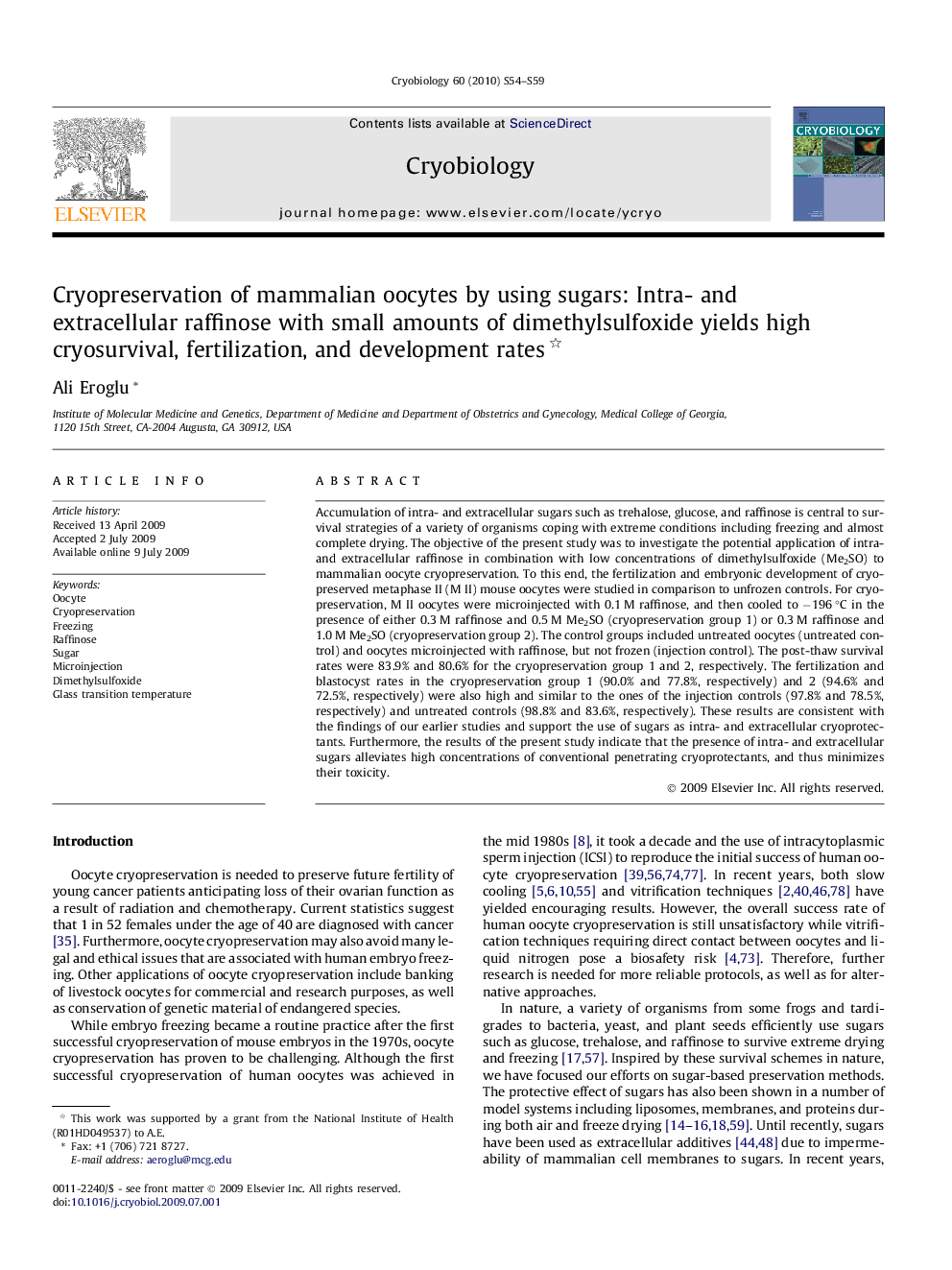| کد مقاله | کد نشریه | سال انتشار | مقاله انگلیسی | نسخه تمام متن |
|---|---|---|---|---|
| 2168834 | 1092918 | 2010 | 6 صفحه PDF | دانلود رایگان |
عنوان انگلیسی مقاله ISI
Cryopreservation of mammalian oocytes by using sugars: Intra- and extracellular raffinose with small amounts of dimethylsulfoxide yields high cryosurvival, fertilization, and development rates
دانلود مقاله + سفارش ترجمه
دانلود مقاله ISI انگلیسی
رایگان برای ایرانیان
کلمات کلیدی
موضوعات مرتبط
علوم زیستی و بیوفناوری
علوم کشاورزی و بیولوژیک
علوم کشاورزی و بیولوژیک (عمومی)
پیش نمایش صفحه اول مقاله

چکیده انگلیسی
Accumulation of intra- and extracellular sugars such as trehalose, glucose, and raffinose is central to survival strategies of a variety of organisms coping with extreme conditions including freezing and almost complete drying. The objective of the present study was to investigate the potential application of intra- and extracellular raffinose in combination with low concentrations of dimethylsulfoxide (Me2SO) to mammalian oocyte cryopreservation. To this end, the fertilization and embryonic development of cryopreserved metaphase II (M II) mouse oocytes were studied in comparison to unfrozen controls. For cryopreservation, M II oocytes were microinjected with 0.1 M raffinose, and then cooled to â196 °C in the presence of either 0.3 M raffinose and 0.5 M Me2SO (cryopreservation group 1) or 0.3 M raffinose and 1.0 M Me2SO (cryopreservation group 2). The control groups included untreated oocytes (untreated control) and oocytes microinjected with raffinose, but not frozen (injection control). The post-thaw survival rates were 83.9% and 80.6% for the cryopreservation group 1 and 2, respectively. The fertilization and blastocyst rates in the cryopreservation group 1 (90.0% and 77.8%, respectively) and 2 (94.6% and 72.5%, respectively) were also high and similar to the ones of the injection controls (97.8% and 78.5%, respectively) and untreated controls (98.8% and 83.6%, respectively). These results are consistent with the findings of our earlier studies and support the use of sugars as intra- and extracellular cryoprotectants. Furthermore, the results of the present study indicate that the presence of intra- and extracellular sugars alleviates high concentrations of conventional penetrating cryoprotectants, and thus minimizes their toxicity.
ناشر
Database: Elsevier - ScienceDirect (ساینس دایرکت)
Journal: Cryobiology - Volume 60, Issue 3, Supplement, July 2010, Pages S54-S59
Journal: Cryobiology - Volume 60, Issue 3, Supplement, July 2010, Pages S54-S59
نویسندگان
Ali Eroglu,